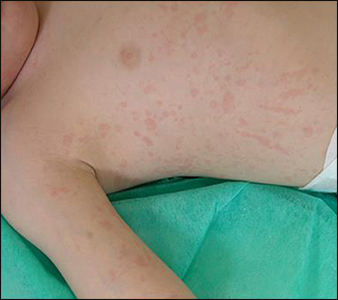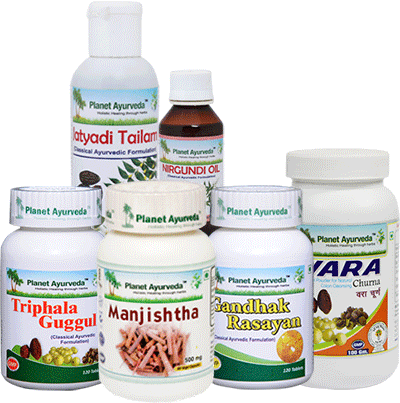Abstract
Systemic juvenile idiopathic arthritis (sJIA) is a rare auto-inflammatory illness that affects children who have an inherently (by birth) 'overactive' immune system. Systemic juvenile idiopathic arthritis affects around 10-20% of children suffering from Juvenile idiopathic arthritis (JIA), which is the most common type of arthritis in children. The occurrence of sJIA is marked by inflammation in joints and other parts of the body. Planet Ayurveda, which is an herbal manufacturing company offering beneficial herbal products for managing sJIA in a natural manner.
Systemic Juvenile Idiopathic Arthritis (sJIA): Introduction
Systemic juvenile idiopathic arthritis (sJIA) is a rheumatic disease which generally affects children aged 5 years or younger. The auto-inflammatory disease is a rare, but critical, subtype of Juvenile idiopathic arthritis (JIA). The disease is 'Systemic' that is, it can affect the joints as well as several internal organs of the body, including the lungs, liver, and the heart.

Systemic juvenile idiopathic arthritis (sJIA) is characterized by an innate 'over activity' of the immune system in affected children. The disease usually develops in children at around two years of age, though it can occur at any time till the age of 16 years. Both the genders are at an equal risk of the occurrence of sJIA. Nearly 40% of the children suffering from sJIA have a lower body height as compared to their healthy counterparts. For many patients, sJIA can be a life-long condition which can continue into adulthood.
Systemic juvenile idiopathic arthritis (sJIA) can potentially lead to some long-term consequences for affected children. It can adversely affect normal growth and bone development, and result in slow or stunted growth, joint damage, and loss of mobility.
Systemic Juvenile Idiopathic Arthritis (sJIA): Causes
The exact cause triggering the onset of sJIA in children is not clearly known, because of which the condition is described as 'idiopathic.' Nonetheless, it is believed that the occurrence of the disease is associated with a combination of genetic and environmental factors. In other words, children with sJIA have a genetic predisposition for the disease which evidently gets triggered in certain environmental settings.
Children affected by sJIA have an overactive immune system which gets activated even when the body is not fighting any infection. In addition, children with sJIA also apparently have elevated blood levels of two inflammatory proteins (cytokines) – interleukin-1 (IL-1) and interleukin-6 (IL-6) – which are a key cause of inflammation in several auto-inflammatory disorders.
Systemic Juvenile Idiopathic Arthritis (sJIA): Symptoms
The common signs and symptoms of sJIA are:
- Recurring fever (103 degrees or higher) which occurs daily at a specific time
- Flat, pink-colored skin rash (on the trunk, arms or legs) noticeable during fever spikes
- Arthritis symptoms like pain, swelling, and stiffness in the joints
- Nausea
- Vomiting
- Generalized feeling of discomfort
- Swollen lymph nodes
- Inflamed or enlarged liver and spleen
- Inflammation of the lining of the lungs or the heart.
Systemic Juvenile Idiopathic Arthritis (sJIA): Natural Treatment
Planet Ayurveda offers effective herbal remedies such as RumoGin-5 Capsules, Ashwagandha Capsules, Boswellia Curcumin and Yograj Guggul for ayurvedic and natural treatment of Systemic Juvenile Idiopathic Arthritis (sJIA). These herbal remedies are prepared using best quality herbs under the proper guidance of Dr. Vikram Chauhan (MD-Ayurveda) by strictly following the Ayurvedic Principles.
Herbal Remedies for Systemic Juvenile Idiopathic Arthritis

PRODUCT DESCRIPTION
1. RumoGin-5 Capsules
RumoGin-5 capsules are an excellent herbal formulation, prepared from a combination of some potent anti-inflammatory herbs which can be very effective in managing arthritis. The herbal ingredients of these capsules include Haridra (Curcuma longa), Shallaki (Boswellia serrata), Sonth (Zingiber officinale), Pippali (Piper longum), and Maricha (Piper nigrum). The use of RumoGin-5 capsules can benefit patients suffering from sJIA because the herbal ingredients have the ability to keep the joints healthy, improve the mobility of joints, reduce swelling around the joints, manage inflammation, treat digestive disorders, provide detoxification benefits to the body, and manage spondylitis, arthritis, slip disc, and several other inflammatory conditions.
Dosage: 1-2 capsules, once or twice a day.
2. Ashwagandha Capsules
The preparation of these capsules involves the use of standardized extract of 'Ashwagandha' herb (Withania somnifera). The potent herb has immense medicinal significance in Ayurveda because of its anti-inflammatory properties. The use of these capsules is beneficial for people affected by sJIA because the capsules can strengthen the muscles, reduce inflammation, improve mental health, support nerve functions, enhance heart health, reduce metabolic imbalances, rejuvenate the body, and balance the Vata and Pitta doshas of the body.
Dosage: 2 capsules, two times a day.
3. Boswellia Curcumin
Two potent anti-inflammatory herbal ingredients – Shallaki (Boswellia serrata) and Curcumin (Curcuma longa) – are used for the preparation of these capsules. The Shallaki herb is known for its ability to fight inflammation, whereas Curcumin is known for its proven antioxidant properties. The use of these capsules is extremely beneficial for sJIA patients because of the combined ability of Shallaki and Curcumin to support healthy functioning of joints, increase blood supply to joint tissue, reduce pain and inflammation, improve the biochemical structure of cartilage, and maintain a healthy cardiovascular system.
Dosage: 2 capsules, two times a day.
4. Yograj Guggul
A combination of some extremely beneficial herbs and other natural ingredients is used for preparing these tablets. The herbal components of the tablets include Shuddh Guggulu (Commiphora mukul), Amalaki (Emblica officinalis), Haritaki (Terminalia chebula), Chitraka (Plumbago zeylanica), Pippali (Piper longum), Ela (Eletteria cardamomum), Sonth (Zingiber officinale), Ajamoda (Trachyspermum roxburghianum), Kushta (Saussurea lappa), Rasna (Pluchea lanceolata), Gokshura (Tribulus terrestris), Patra (Cinnamomum zeylanicum), Mustaka (Citrus rotundus), Jeeraka (Cuminum cyminum), Devdaru (Cedrus deodara), Yavani (Trachyspermum ammi), and Karavi (Piper chaba). The use of these tablets can benefit sJIA patients because of the herbal ingredients of the tablets have the combined ability to treat Arthritis, support healthy muscles, support digestion, reduce inflammation, maintain healthy metabolism, manage abdominal tumors, balance the Vata dosha, and manage diseases which affect bones, joints and bone marrow.
Dosage: 2 tablets, two times a day.
Conclusion
The herbal products available from Planet Ayurveda have the ability to manage Systemic juvenile idiopathic arthritis (sJIA) in a safe and effective manner. The products are prepared from 100% pure and natural ingredients. The products do not contain any chemicals, preservatives, artificial colors, additives, binders, or fillers. However, it is recommended that patients suffering from sJIA should use these herbal products in consultation with an Ayurveda expert.







